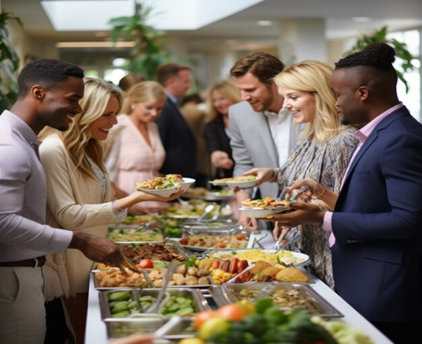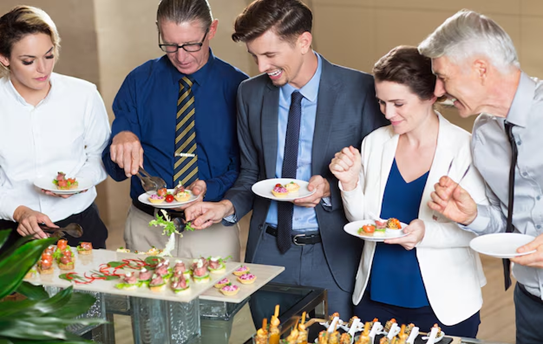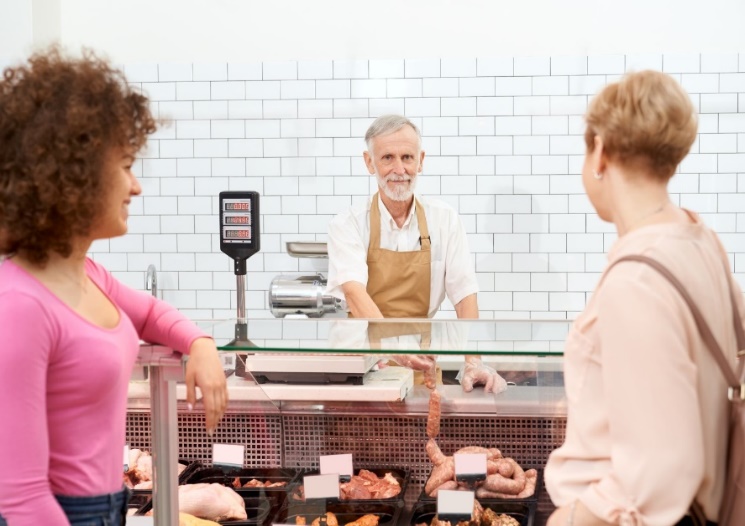55 9.5: Refills, Returned Items, and Self-Service
9.5 – Refills, Returned Items, and Self-service
The FDA Food Code provides specific guidelines for refills, returns, and re-service of food and beverages in food establishments to ensure food safety and prevent contamination. These requirements are designed to protect public health while allowing for certain practices that reduce waste and accommodate customer preferences.
Refills
For beverage refills, the FDA Food Code allows food-specific containers to be refilled at food establishments under certain conditions:
The container design and rinsing equipment must allow for effective cleaning.
Fresh, hot water under pressure must be available for rinsing returned containers.
Refilling must be done only for the same consumer who provided the container.
The refilling process must be performed by a food establishment employee or through a contamination-free transfer system.
Returns and Re-service
The Food Code generally prohibits the re-service of previously served food items to prevent potential contamination. However, there are some exceptions:
Unopened, non-potentially hazardous food in original packages may be re-served if in good condition
Certain packaged condiments may be re-served.
For returned food, the Code requires that it must be discarded or reconditioned according to an approved procedure if it is found to be unsafe, adulterated, or contaminated.
Special Considerations
The Food Code places additional restrictions on food service for highly susceptible populations, such as young children, older adults, and immunocompromised individuals. These restrictions include:
Prohibition of serving raw or undercooked animal foods
Requirement to use only pasteurized eggs and juices.
Stricter rules on re-service and food returns. Generally, food that can be re-served to another customer includes unopened, pre-packaged items like crackers or condiment packets. Items that have been handled by customers, especially those that are not pre-packaged, like uneaten bread or uncovered condiments, should not be re-served due to contamination risks.
Food that has been served or returned by a consumer cannot be reoffered for consumption, except under specific conditions. Non-time/temperature control for safety (TCS) foods, such as items in closed containers (e.g., ketchup bottles) or unopened original packages (e.g., crackers), may be reserved if they remain uncontaminated and in sound condition.
For cold-held TCS foods removed from refrigeration, strict monitoring is required to prevent temperature abuse. Foods must be marked with the time they are removed from refrigeration and the six-hour expiration time. If the temperature exceeds 70°F (21°C), the food must be discarded. Similarly, unmarked or improperly marked containers must also be discarded.
Alternatively, such foods may be cooked and served or consumed within the six-hour limit if they remain safe for consumption. In establishments serving highly susceptible populations, such as hospitals or nursing homes, time-based public health controls for raw eggs are prohibited.
Customers Serving Themselves – Self Service Areas


Images courtesy of Freepix
The FDA Food Code outlines specific requirements for self-service areas in retail food establishments to ensure food safety and prevent contamination. These requirements are designed to protect consumers and maintain proper hygiene standards in areas such as salad bars and buffets.
Self-service Food Requirements:
Monitor times and temperatures for RTE.TCS foods.
Stir food frequently to distribute the heat evenly
Never mix new with old food
The only raw food allowed is sushi or raw shellfish, ready to cook portions and raw or frozen shell-on lobster for shrimp.
Equipment and Utensil Requirements:
Sneeze guard installed
Dispensers must be cleaned prior to restocking.
Utensils should be provided for each food item and replaced when soiled.

Image courtesy of Freepix
Knives, forks and spoons must be stored in a way that requires the consumer to grab the handle.
Single-use utensils must be in their original wrapper or dispensed from an approved device.
Handling tableware:
Staff must not touch parts of the tableware that come into contact wit the food or lips.
Unwrapped knives, forks, and spoons must be presented by their handles.
At self-service areas, consumers may only touch the handles of utensils.
Signs and Labels:
Label each food item.
A sign must be posted requiring a clean plate for second portions.
A customer notification sign must be posted when offering allowed raw or undercooked animal foods.
Key Requirements for Self-Service Areas
Food Protection: Self-service areas must have effective means to protect food from contamination. This includes sneeze guards or other protective equipment to shield food from customer contact.
Utensil Handling: Suitable utensils, such as tongs, spoons, or forks, must be provided for each container displayed at a consumer self-service area. These utensils should be stored with their handles above the top of the food and the container.
Temperature Control: Time/temperature control for safety (TCS) foods in self-service areas must be maintained at proper temperatures to prevent pathogen growth. Hot foods should be kept at 135°F (57°C) or above, while cold foods should be maintained at 41°F (5°C) or below.
Employee Monitoring: A food employee trained in safe operating procedures must be assigned to monitor consumer self-service areas. This includes ensuring proper utensil use, preventing contamination, and monitoring food temperatures.
Consumer Notification: Consumers must be notified that clean tableware should be used when returning to self-service areas. This can be done through the use of placards, table tents, or other effective means.
Refill Policies: The Food Code allows for the refilling of consumer-owned containers with beverages if contamination risks are minimized. However, this does not apply to self-service areas due to the increased risk of contamination.
By adhering to these FDA Food Code requirements, food establishments can maintain safe and hygienic self-service areas, reducing the risk of foodborne illnesses and ensuring a positive dining experience for consumers.
______________________________________________________________________________
Self-Service Summary – remember:
Monitor times and temperatures for RTE and TCS foods.
Stir food frequently to distribute heat evenly.
Never mix new food with old food.
Raw food in self-service areas is limited to specific items like sushi, raw shellfish, and raw or frozen shell-on shrimp or lobster.
Sneeze guards must be installed.
Clean dispensers before restocking.
Provide utensils for each food item and replace when soiled.
Store utensils with handles up.
Single-use utensils must be in original wrapper or approved dispenser.
Staff must not touch food-contact surfaces of tableware.
Consumers should only touch utensil handles in self-service areas.
Label each food item including raw food items.
